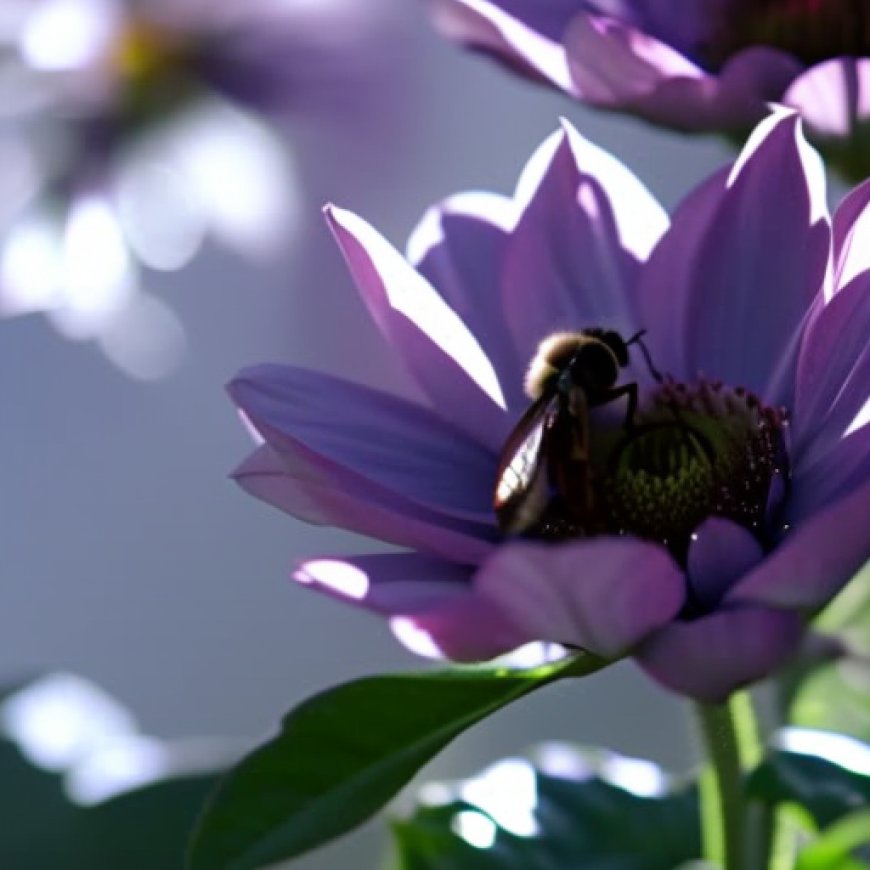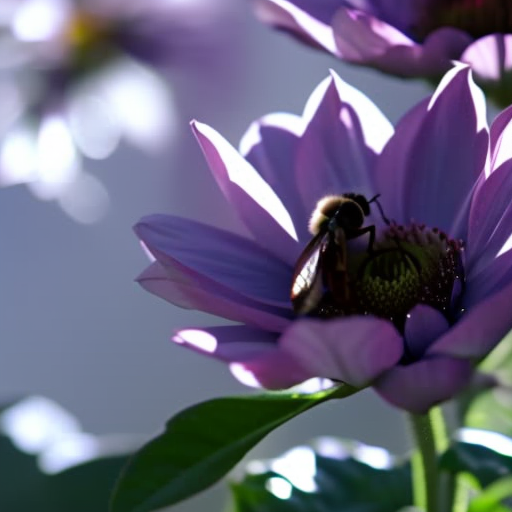Air Pollution Makes Flowers Smell Less Appealing to Pollinators, Study Suggests
Air Pollution Makes Flowers Smell Less Appealing to Pollinators, Study Suggests Smithsonian Magazine


Air Pollution Threatens Wildflower Fragrances and Pollinators
:focal(570x369:571x370)/https://tf-cmsv2-smithsonianmag-media.s3.amazonaws.com/filer_public/12/15/12156084-7777-4bd7-9405-31669701c7d5/moth_1.jpg)
Floris Van Breugel
Introduction
Scientists have discovered a new consequence of burning fossil fuels: the disappearance of natural scents in the environment. In a recent study published in the journal Science, researchers highlight how air pollution from industrial sources is breaking down the fragrances emitted by wild plants, which are essential for attracting pollinators.
The Impact on Pollinators
The study focused on the olfactory symbiosis between primrose, a nocturnal wildflower, and hawk moths, which are attracted to the flower’s aroma. The researchers found that common air pollutants, such as ozone and nitrate radicals, significantly deteriorate the scent of the wildflower, discouraging moths from landing on polluted plants.
Research Methods
The team collected air samples containing the fragrance of primrose in a field in eastern Washington. They then analyzed the samples in the lab, identifying 22 unique chemical components that attract hawk moths. By studying the electrical activity in the moths’ antennae, they determined which scent components were most attractive to the insects. Monoterpenes, a type of chemical found in fruits and vegetables, were found to be a favorite among the moths.
Effects of Air Pollution
To simulate the impact of air pollution on the primrose scent, the researchers created their own version of the fragrance and added chemicals commonly found in pollutants. The results showed that when ozone was added, the concentration of monoterpenes in the scent decreased by 30 percent. However, when nitrate radicals were mixed in, the concentration dropped by 84 percent. This decrease in fragrance directly affected the visitation of hawk moths to the polluted flower.
Consequences for Pollinators and Plants
The reduced scent of the polluted flower led to a 50 percent decrease in visitation by tobacco hawk moths and a complete cessation of visits by white-lined sphinx moths. In a field experiment, hawk moths visited the polluted flower 70 percent less compared to healthy primroses, resulting in a 28 percent reduction in seed production. The study’s computer models also revealed that air pollution has reduced the distance from which pollinators can detect scents by up to 75 percent since preindustrial times.
Sustainable Development Goals
This research aligns with several Sustainable Development Goals (SDGs), including:
- SDG 13: Climate Action – By highlighting the impact of air pollution on pollinators and plant reproduction, this study emphasizes the need to reduce greenhouse gas emissions and transition to cleaner energy sources.
- SDG 15: Life on Land – The decline of wildflower fragrances and the disruption of pollinator behavior have implications for biodiversity and the health of ecosystems.
- SDG 12: Responsible Consumption and Production – The findings underscore the importance of reducing pollution from industrial sources and promoting sustainable practices to protect the environment and its inhabitants.
Conclusion
This multidisciplinary study reveals the detrimental effects of air pollution on wildflower fragrances and pollinators. The disappearance of scents due to pollution threatens agricultural output, biodiversity, and the delicate balance of ecosystems. To mitigate these impacts, it is crucial to transition away from fossil fuel combustion and invest in alternative sources of energy. By addressing the issue of air pollution, we can work towards achieving the SDGs and creating a more sustainable future.
SDGs, Targets, and Indicators Analysis
1. Which SDGs are addressed or connected to the issues highlighted in the article?
- SDG 3: Good Health and Well-being – The article discusses the impact of air pollution on the health and well-being of pollinators.
- SDG 13: Climate Action – The article highlights the need to move away from fossil fuel combustion to reduce air pollution and its effects on the environment.
- SDG 15: Life on Land – The article emphasizes the importance of pollinators and their role in maintaining biodiversity and ecosystem health.
2. What specific targets under those SDGs can be identified based on the article’s content?
- SDG 3.9: By 2030, substantially reduce the number of deaths and illnesses from hazardous chemicals and air, water, and soil pollution and contamination.
- SDG 13.2: Integrate climate change measures into national policies, strategies, and planning.
- SDG 15.5: Take urgent and significant action to reduce the degradation of natural habitats, halt the loss of biodiversity, and protect and prevent the extinction of threatened species.
3. Are there any indicators mentioned or implied in the article that can be used to measure progress towards the identified targets?
- Indicator for SDG 3.9: Number of deaths and illnesses attributed to air pollution.
- Indicator for SDG 13.2: Adoption of policies and measures to reduce greenhouse gas emissions.
- Indicator for SDG 15.5: Proportion of species categorized as threatened, extinct, or endangered.
Table: SDGs, Targets, and Indicators
| SDGs | Targets | Indicators |
|---|---|---|
| SDG 3: Good Health and Well-being | 3.9: By 2030, substantially reduce the number of deaths and illnesses from hazardous chemicals and air, water, and soil pollution and contamination. | Number of deaths and illnesses attributed to air pollution. |
| SDG 13: Climate Action | 13.2: Integrate climate change measures into national policies, strategies, and planning. | Adoption of policies and measures to reduce greenhouse gas emissions. |
| SDG 15: Life on Land | 15.5: Take urgent and significant action to reduce the degradation of natural habitats, halt the loss of biodiversity, and protect and prevent the extinction of threatened species. | Proportion of species categorized as threatened, extinct, or endangered. |
Behold! This splendid article springs forth from the wellspring of knowledge, shaped by a wondrous proprietary AI technology that delved into a vast ocean of data, illuminating the path towards the Sustainable Development Goals. Remember that all rights are reserved by SDG Investors LLC, empowering us to champion progress together.
Source: smithsonianmag.com

Join us, as fellow seekers of change, on a transformative journey at https://sdgtalks.ai/welcome, where you can become a member and actively contribute to shaping a brighter future.







